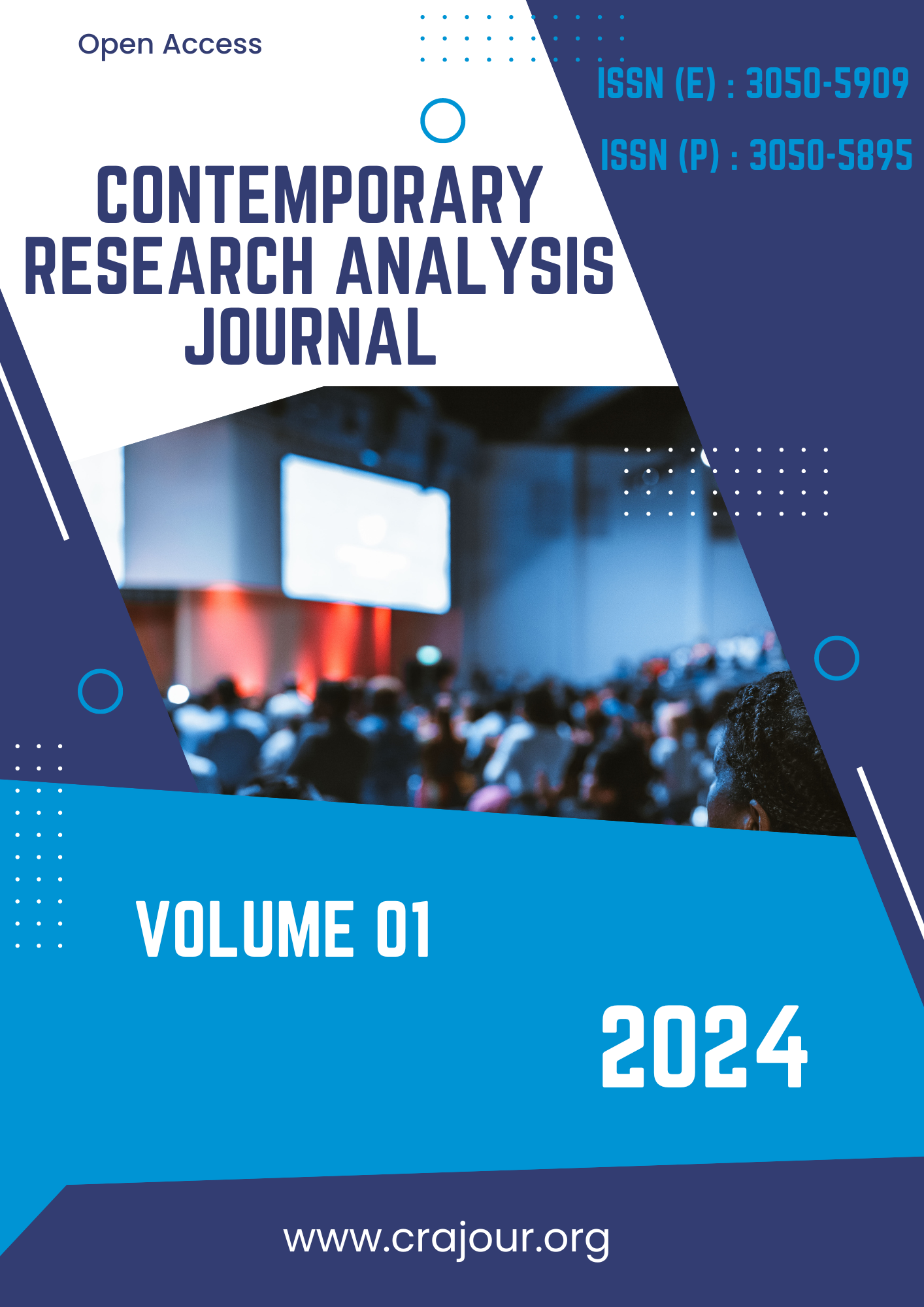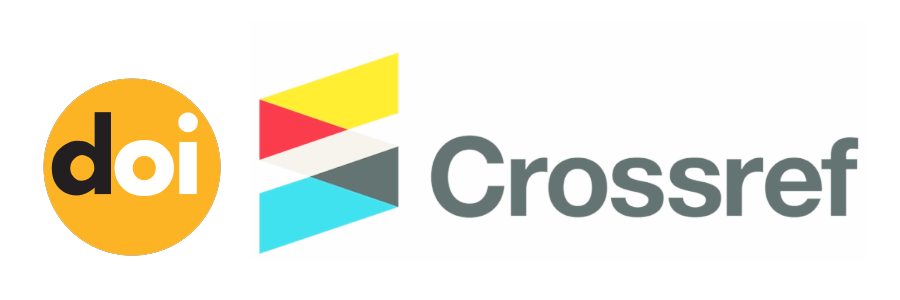Ethnobotanical Study of Antidiabetic Plants and Local Practices in the Treatment of Diabetes in Benin
DOI:
https://doi.org/10.55677/CRAJ/06-2024-Vol01I3Keywords:
Inventory - Local Practices - Antidiabetic Plants - BeninAbstract
As an important cultural element, people have used plants for centuries for various purposes. In Benin, the sale of medicinal plants in city markets is a reality that dates back years. To understand the practices in the field, an ethnobotanical survey on plants with antidiabetic properties in the communes of Gogounou, Parakou, Abomey-Calavi and Pobe was carried out during this study against the high prevalence of diabetes in the departments of these towns and the strong animation of the markets surveyed by herbalists. The objective is to determine the plants used in the treatment of diabetes and the related practices. To do this, 120 diabetic patients and 120 herbalists were sampled. The semi-structured interviews carried out with patients and herbalists made it possible to retain a total of 65 medicinal plants with antidiabetic properties grouped into twenty-seven botanical families with the dominance of Apocynaceae (FRC = 18.5%) and Combretaceae (FRC = 11.6 %). The frequency analyzes carried out showed Phyllantus amarus (FRC = 10.22%), Khaya senegalensis (FRC = 9.60%) as the species most cited by herbalists. On the other hand, those supposed to be effective by diabetics are: Phyllanthus amarus, Bridelia ferruginea, Moringa oleifera, Khaya senegalensis, Momordica charantia, and Sarcocephalus latifolius. The majority of the plants listed are microphanerophytes, mesophanerophytes and nanophanerohytes. The leaves are the most used parts. Likewise, a decoction of the leaves is the main method of preparation. However, after a hierarchical classification of the different local practices identified, there is a problem of effectiveness and efficiency of the local practices adapted in the traditional treatment of Diabetes. This is justified by the existence of several preparations, recipes and dosage for the same species. These results constitute a source of information for future research in the field of phytochemistry and pharmacology.
References
Abdullahi, A.A., 2011. Trends and Challenges of Traditional Medicine in Africa. African Journal of Traditional, Complementary and Alternative Medicine, pp.: 115-123. (http://www.ncbi.nlm.nih.gov/pmc/articles/PMC3252714/).
Achigan-Dako E.G., Pasquini M.W., Assogba Komlan F., N’Danikou S., Dansi A. & Ambrose-Oji B., 2010. Traditional vegetables in Benin. National Institute of Agricultural Research of Benin. CENAP Printing Works, Cotonou, 285 pp.
Adjanohoun, E., Adjaktdjè, V., Ahyi, M.R.A, Aké Assi, L., Akoègninou, A., D'Almeida, J., Apovo, F., Boukef, K., Chadare, M., Cusset, G., Dramane, K., Eymé, J., Gassita, J.N., Gbaguidi, N., Goudoté, E., Guinko, S., Houngnon, P., LO, I., Saadou, M., Sodogandji, Th., De Souza, S., Tchabi, A., Zinsou Dossa, C., Zohoun, Th., 1989. Contribution to ethnobotanical and floristic studies in Benin, Paris: ACCT, 895 p.
Adomou, Ac, H Yedomonhan, B Djossa, Si Legba, M Oumorou, et A Akoegninou. 2012. « Ethnobotanical study of medicinal plants sold in the market of Abomey-Calavi in Benin”. International Journal of Biological and Chemical Sciences 6 (2). traditional treatment of diabetes. Accessed October 28, 2019
Ali H, Houghton PJ, Soumyanath A., 2006. Alpha-Amylase inhibitory activity of some Malaysian plants used to treat diabetes; with particular reference to Phyllanthus amarus. J Ethnopharmacol.107(3):449–55. www.GoogleScholar.com. Accessed October 28, 2019
Amoussou-Guenou, D., Wanvoegbe, A., Hermans, M., Agbodande, A., Boko, M., Amoussou-Guenou Fandi, A., et al. (2015). Prevalence and Risk Factors of Diabetes Mellitus in the Adult Population of Porto-Novo (Benin). Journal of Diabetes Mellitus, 5, 135-140
Assogbadjo A.E., Amadji G., Glèlè L.R., Mama A., Sinsin B. & Van Damme P., 2009, Ecological and ethnobotanical evaluation of Jatropha curcas in Benin. International Journal of Biological and Chemical Sciences, 3, 5, 1065-1077.
Bailey CJ, Day C, Turner SL, Leatherdale BA. Cerasee, a traditional treatment for diabetes: Studies In Normal And Streptozotocin Diabetic Mice. Diabetes Res. 1985 Mar;2(2):81–4. Www.Googlescholar.Com.
Dibong SD, Mpondo Mpondo E, Ngoye A, Kwin M F, Betti Jean Lagarde. Ethnobotany and Phytomedicine of Medicinal Plants of Douala. J. Appl. Biosci. 2011 (37) ; 2496-2507.
Djrolo, F., Kerekou, A., & Amoussou-Guenou, D. (2012). Bacteriological Aspects of the Diabetic Foot in Cotonou. Journal de la Société de Biologie Clinique du Bénin, 22, 5-8
Dougnon, T. V., Agbankpe, J., Klotoe, J. R., Loko, F., Kpenavoun, C. S., & Yedomonhan, H. (2016). Medicinal plants used in the treatment of mental and neurological diseases in southern Benin. African Journal of Traditional, Complementary, and Alternative Medicines, 13(6), 9-13.
Dresse, A., Dresse, F., Baranzini, N., Bonvin, C., & Von Rohr, P. R. (2013). Development of a new method for monitoring the quality of honey based on viscosity measurements. Journal of Food Engineering, 115(4), 454-459.
Enneb, H, A. Be Kadhi, F. Cheour, Et A. Ferchichi. 2015. « Comparison of Phenolic Compounds and Antioxidant Power of Henna Plant (Lawsonia Inermis L.) - Journal Of New Sciences ». 2015. Http://Www.Jnsciences.Org/Agri-Biotech/42-Volume-10/93-Multiplication-De-L-Arganier-Argania-Spinosa-L-Skeels.
Erasto P., Adebola P.O., Grierson D.S., Afolayan A.J., 2005. An ethnobotanical study of plants used for the treatment of diabetes in the Eastern Cape Province South Africa. African J. of Biotech, 4: 1458-1460.
Ezebilo E.E. & Mattsson L., 2010, Contribution of non-timber forest products to livelihoods of communities in southeast Nigeria. International Journal of Sustainable Development and World Ecology, 17, 3, 231-235.
Fah L., Klotoé J., Dougnon, V., Koudokpon H., Fanou V., Dandjesso C., & Loko F. (2013). Ethnobotanical study of plants used in the treatment of diabetes in pregnant women in Cotonou and Abomey-Calavi (Benin). Journal of Animal &Plant Sciences, 18(1), pp. 2647-2658. Consulté le 28 octobre 2019
Fandohan, B., R. Glele Kakai, B. Sinsin, and D. Pelz. 2008. Dendrometric and spatial characterization of three medicinal woody species in the Wari-Maro classified forest in Benin. Rev. Ivoirienne Sci. Technol 12: 173–186.
Gaoue, O. G., and T. Ticktin. 2007. Patterns of harvesting foliage and bark from the multipurpose tree Khaya senegalensis in Benin: Variation across ecological regions and its impacts on population structure. Biol. Conserv. 37: 424–436.
Gning, O. N., O. Sarr, et L. E. Akpo. 2014. « Richness of the Malinke Pharmacopoeia: Medicinal Role of the Khossanto Tree: (Kedougou, Eastern Senegal) ». Journal of Applied Biosciences 74 (1): 6043‑58. https://doi.org/10.4314/jab.v74i1.11.
Gouwakinnou G.N., Lykke A.m., Assongbadjo A.E. & Sinsin B., 2011, Knowledge, pattern and diversity of use Sclerocarya birrea. Journal of Ethnobiology and Ethnomedicine, 7, 8, 17466-4269.
INSAE. 2015. General census of population and housing - Benin (RGPH 4).
Jenik, J. 1994. The Dahomey-Gap: an important issue in African phytogeography. Mem. la Soc. Biogeogr. (3e Ser. iV: 125–133).
Karou, S. D., Tchacondo, T., Tchibozo, M. A., Abdoul-Rahaman, S., Anani, K., Koudouvo, K., et al. (2011). Ethnobotanical survey of medicinal plants used in the management of diabetes mellitus and hypertension in the Central Region of Togo. Pharmaceutical Biology, 49(12), 1286-1297.
Klotoé JR., Dougnon TV, Koudouvo K, Atègbo J-M, Loko F, Akoègninou A, Aklikokou K, Dramane K, Gbeassor M, 2013. Ethnopharmacological survey on antihemorrhagic medicinal plants in South of Benin. European Journal of Medicinal Plants 3(1): 40-51.
Ladoh-Yemeda, C. F., T. Vandi, S. D. Dibong, E. Mpondo Mpondo, J. D. Wansi, J. L. Betti, F. Choula, Din Ndongo, et M. Tomedi Eyango. 2016. « Ethnobotanical study of medicinal plants marketed in the markets of the city of Douala, Cameroon». Journal of Applied Biosciences 99 (1): 9450‑66.
Lawin, H., Agodokpessi, G., Schlünssen, V., Sigsgaard, T., Fayomi, B., & Hounsou, E. (2016). Respiratory health in cotton ginners exposed to organic dust in Benin. Occupational Medicine, 66(3), 228-234
Ministry of Health of the Republic of Benin (2010). National Health Development Plan 2009-2018. Cotonou: Ministry of Health.
N'Guessan K, Kadja B, Zirihi G, Traoré D, Aké-Assi L. Phytochemical screening of some Ivorian medicinal plants used in Krobou country (Agboville, Ivory Coast) Sciences & Nature (Internet) 2009;6(1). Available from: http://www.ajol.info/index.php/scinat/article/view/48575. www.GoogleScholar.com.
Ouinsavi, C., Sokpon, N., & Biaou, H. (2006). Ecological studies on the regeneration and sustainable management of iroko (Milicia excelsa) in Benin. Forest Ecology and Management, 229(1-3), 190-199.
PNUD BENIN (2009). Human Development Report 2009: Overcoming barriers: Human mobility and development. New York: United Nations Development Programme.
Raunkiaer, C. (1934). The Life Forms of Plants and Statistical Plant Geography. Oxford: Clarendon Press.
Tardio J., & Pardo-De-Santayana. (2008). Cultural Importanc Indice: A Comparative Analysis Baesd on the Useful Wild Plants of Southern Cantabria (Northern Spain). Economic Botany, 62(1), pp. 24-39.
Thirumalai T., Beverly C D, Sathiyaraj K., Senthilkumar B., David E. 2012. Ethnobotanical Study of Anti-diabetic medicinal plants used by the local people in Javadhu hills Tamilnadu, India. Asian Pacific Journal of Tropical Biomedicine, S910-S913.
Ticktin, T., D. Mondragon, and O. G. Gaoue. 2016. Host genus and rainfall drive the population dynamics of a vascular epiphyte. Ecosph. 7(11) 01580. 10.1002/ecs2.1580 7: 1–13.
United Nations Development Programme (2016). Human Development Report 2016: Human Development for Everyone. New York: United Nations Development Programme.
World Health Organization (2000). The World Health Report 2000: Health Systems: Improving Performance. Geneva: World Health Organization.
World Health Organization (2014). World Health Statistics 2014. Geneva: World Health Organization.
Zahira, A., Al-Junid, S. M., Razak, M. A., Omar, M. A., Mohamed, A. K., & Kassim, M. Z. (2017). Prevalence of Obesity and Its Associated Factors among Adults in a Rural Community in Malaysia. Malaysian Journal of Public Health Medicine, 17(2), 49-58.
Ziyyat A, Legssyer A, Mekhfi H, Dassouli A, Serhrouchni M, Benjelloun W. Phytotherapy of hypertension and diabetes in oriental Morocco. J Ethnopharmacol. 1997 Sep;58(1):45–54. www.Google.com , consulté le 28 octobre 2019.
Published
Issue
Section
License
Copyright (c) 2024 Contemporary Research Analysis Journal

This work is licensed under a Creative Commons Attribution 4.0 International License.



